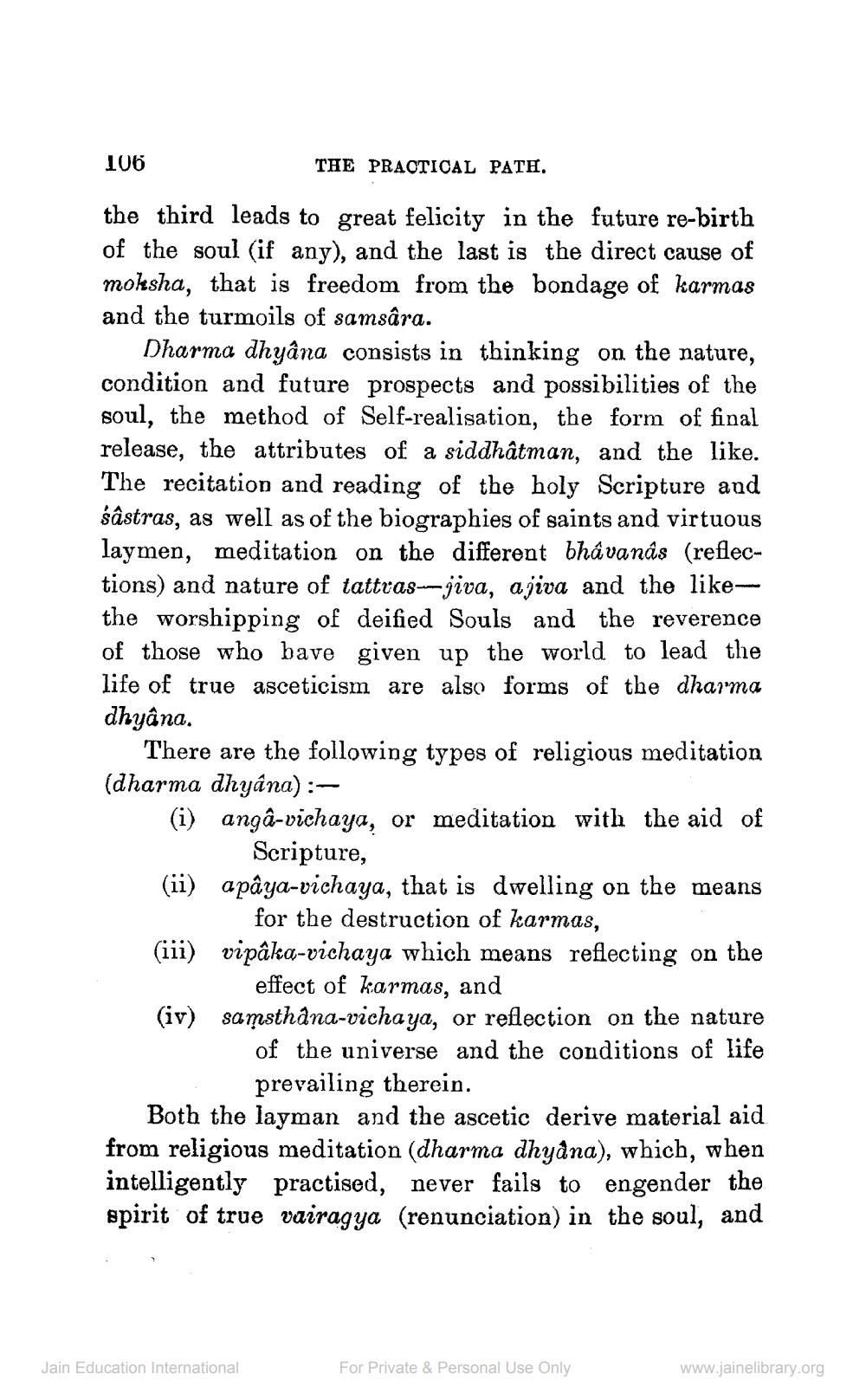________________
106
THE PRACTICAL PATH.
the third leads to great felicity in the future re-birth of the soul (if any), and the last is the direct cause of moksha, that is freedom from the bondage of karmas and the turmoils of samsára.
Dharma dhyâna consists in thinking on the nature, condition and future prospects and possibilities of the soul, the method of Self-realisation, the form of final release, the attributes of a siddhâtman, and the like. The recitation and reading of the holy Scripture and śâstras, as well as of the biographies of saints and virtuous laymen, meditation on the different bhâvanás (reflections) and nature of tattvas-jiva, ajiva and the likethe worshipping of deified Souls and the reverence of those who bave given up the world to lead the life of true asceticism are also forms of the dharma dhyâna.
There are the following types of religious meditation (dharma dhyana) :(i) angâ-vichaya, or meditation with the aid of
Scripture, (ii) apaya-vichaya, that is dwelling on the means
for the destruction of karmas, (iii) vipâka-vichaya which means reflecting on the
effect of karmas, and (iv) samsthana-vichaya, or reflection on the nature
of the universe and the conditions of life
prevailing therein. Both the layman and the ascetic derive material aid from religious meditation (dharma dhyana), which, when intelligently practised, never fails to engender the spirit of true vairagya (renunciation) in the soul, and
Jain Education International
For Private & Personal Use Only
www.jainelibrary.org




